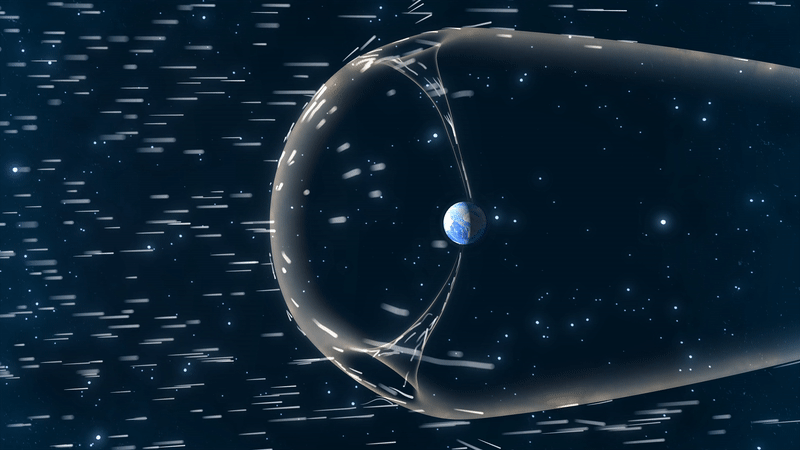Phys.org November 26, 2019
Most of Earth is shielded from the solar wind but right near the poles the magnetic field becomes a funnel, known as cusp, where the solar wind can get all the way down to the atmosphere disrupting satellites and radio and GPS signals. Beginning Nov. 25, 2019, three new NASA-supported missions will launch into the northern polar cusp, aiming to improve the technology affected by it. The three missions are all part of the Grand Challenge Initiative. Cusp is a series of nine sounding rocket missions exploring the polar cusp capturing the strange phenomena inside the cusp. Two of the three upcoming missions will study a patch of atmosphere inside the cusp notably denser than its surroundings, about 1.5 times heavier. The mission aims to better understand its effects on satellites and spacecraft that follow a polar orbit and GPS and communications signals they transmit…read more.

Animated illustration showing the solar wind streaming around Earth’s magnetosphere. Near the North and South Poles, Earth’s magnetic field forms funnels that allow the solar wind access to the upper atmosphere. Credit: NASA/CILab/Josh Masters